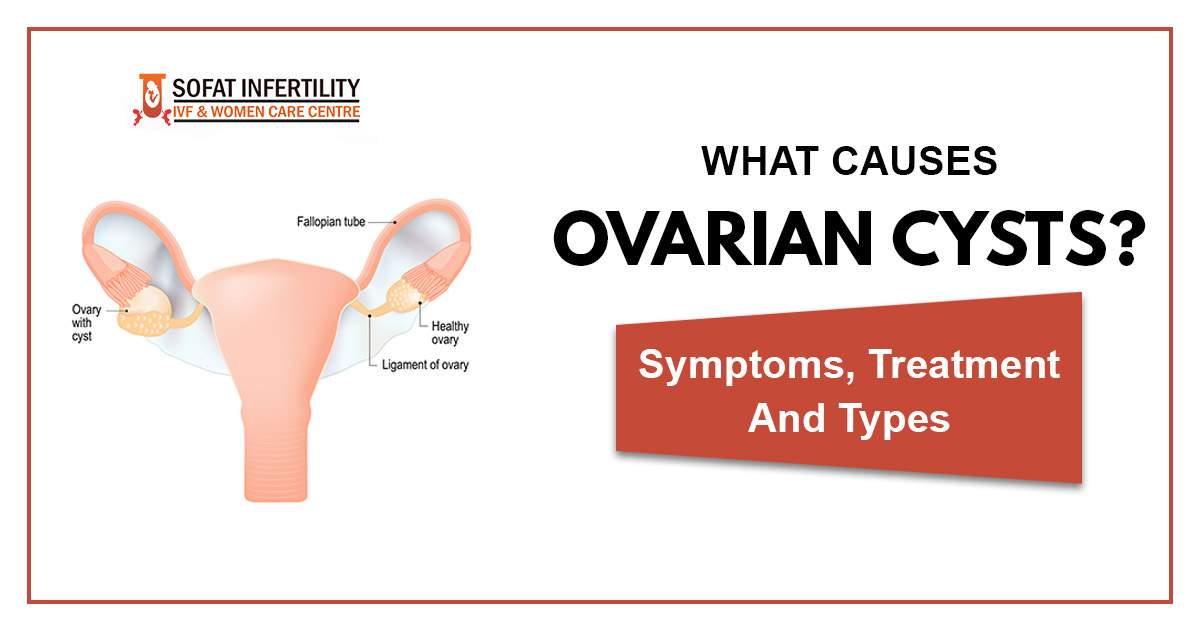Ovarian Cysts are cysts that occur within the ovary. They might be filled with a semisolid substance or a liquid. Their occurrence has become a common condition among women. Women with this condition might require IVF Treatment for becoming a mother.
Symptoms
- They may or may not show symptoms. Usually, the following symptoms are seen-
- Feeling pain in the abdominal or pelvic area, which might radiate to the lower back
- Feeling bloated and having indigestion
- Increase in the girth of the abdomen
- Having difficult and painful bowel movements
- Feeling pain during sexual intercourse
- Feeling nauseous
- Feeling Breast pain
- Urinary urgency
Treatment for ovarian cysts
Ovarian cysts in women are noncancerous and have no long-term medical consequences. The treatment depends on the cause of the cysts and the presence of symptoms due to it. Other factors on which the treatment depends is the size of the cyst, the woman’s age, and whether the cyst is simple or complex. Monitoring is recommended unless the cysts rupture and cause bleeding, wherein the surgical treatment is prescribed.
Surgery for ovarian cysts
Laparoscopy may be used to surgically remove a cyst or any other mass. It can also be removed using abdominal incision or laparotomy if it is causing severe pain. After the removal of the cyst, a biopsy of the cyst is conducted.
Types of cysts
Follicular cysts: This is the most common type of cyst. It results from the growth of a follicle (a fluid-filled sac that contains an egg). Follicular cysts are formed when the follicle grows more than its normal size during the menstrual cycle and fails to open and release an egg after opening.
Corpus luteum cysts: A Corpus luteum cyst is formed when the corpus luteum fails to break down and disappear through menstruation. Instead, it fills up with fluid or blood and forms a cyst on the ovary.
Chocolate cysts: It occurs in women with endometriosis (a condition in the lining of the uterus) that starts growing outside the uterus into other organs. The endometrial tissue grows and bleeds leading to the formation of a cyst filled with blood. It usually has red- or brown-colored contents, due to which it gets its name.
PCOS: The polycystic ovarian syndrome is a condition in which multiple small cysts are formed in both the ovaries.
Dermoid cysts (benign cystic teratomas): When the tissues of the ovary develop abnormally and form other body tissues like hair or teeth, then they are known as cystic teratomas or dermoid cysts.
Tubo-ovarian abscesses: Very often, infection in the pelvic organs can lead to the formation of pus-filled cysts in, on and around the ovary and the fallopian tubes. Such cysts are known as tubo-ovarian abscesses.







